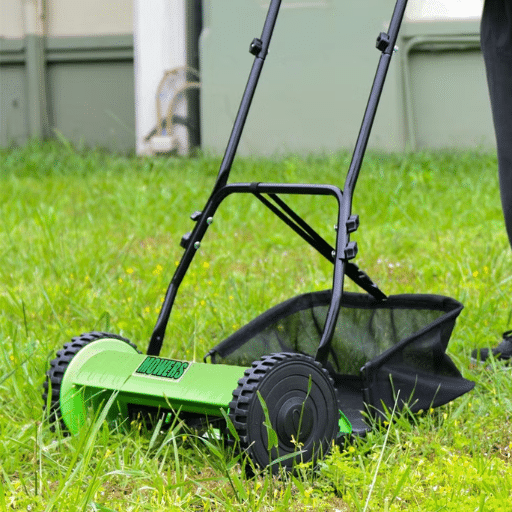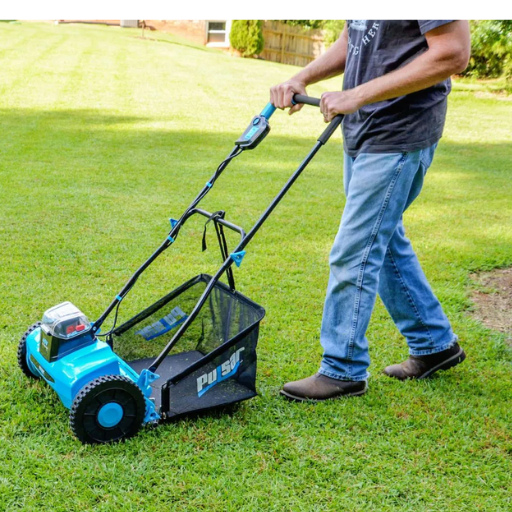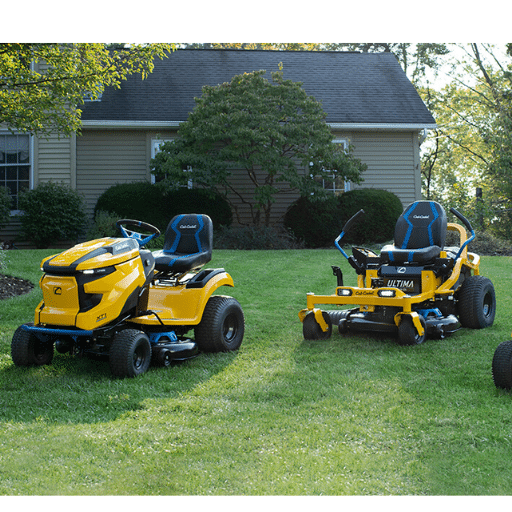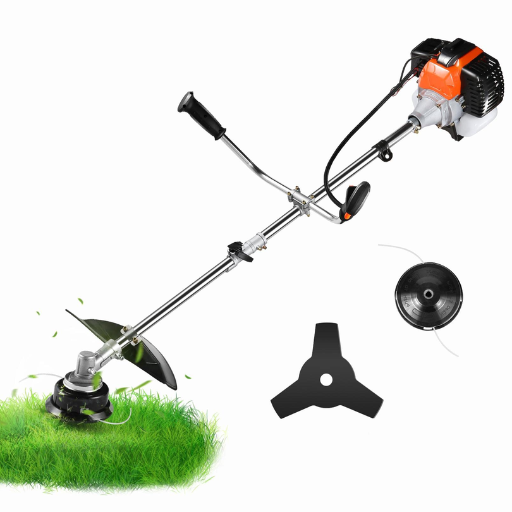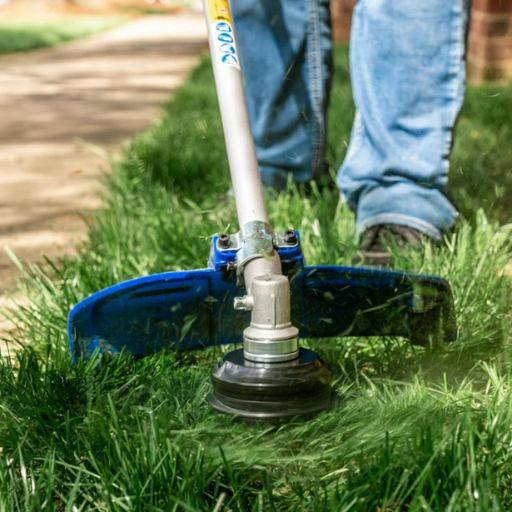Bakeries’ mode of operation is changing at a fast pace. Thus the adoption of new strategies and technologies is important. The article will cover the latest technologies in bakery packaging machines. Sophisticated technologies in packaging machines allow rapid production cycles, less waste along with long shelf life of the products which are essential for all modern bakeries. The industry is ready for an overhaul with the ultimate bakery packaging machine bringing everything from systematization through to sustainable packaging which is a plus. Here, we will discuss the features, advantages, and effects of this machine on future bakers.
What is a bakery packaging machine and how does it work?

With the help of a bakery packaging machine designed for this purpose, the task is simple, quick, and efficient. Wrapping and sealing are only two out of many tasks that include portioning, as well as wrapping and labeling in a single machine and each product can be packed in the most uniform way for the market. This process begins with the placement of baked products into the system for evaluation and measurements. These products are then transported along conveyor belts and other devices that use protective films or ecological wraps for freshness and quality purposes. Given the automated nature of these machines, harnessing these machines reduces manual work, enables packaging to be done at a quicker pace, and reduces the chances of making errors when packaging goods which makes the operations of modern bakeries more efficient.
Understanding the packaging process in the bakery industry
As for the packaging segment which is the last aspect of the bakery industry, it starts with the evaluation of the baked goods and deciding on the fit-for-purpose packaging requirements which include dimension and type of materials. Once assessed, products are placed onto conveyors where they are transported to the packaging machine. At this point, the systems automatically measure and cut the products into more manageable portions, before the wrapping stage, which involves applying plastic films, paper wraps, or biodegradable wraps to preserve the quality of the product. The wrapping is immediately followed by sealing and marking which protect, and secure the products and serve the purpose of identification of the products. This sophisticated process not only speeds up production but enhances efficiency by reducing human error, and waste and prolonging the shelf life of the product. With the assistance of such modern packaging, bakeries are in a position to address the concerns of consumers satisfactorily and hold their ground in the competitive marketplace.
Key components of a bakery packaging machine
As I look at the main elements of a bakery packaging machine, I always focus on various certain components, which are crucial for its proper functioning. Central to this is the conveyor belt system, which ensures the smooth and continuous transport of baked products through the machine during the processes. Next, the measuring and portioning system determines the volume and mass of goods to be packed to create uniform packages. The wrapping unit ensures that protective materials are placed around products using films and biological wraps that have been designed to meet the needs of the product. Sealing devices are then employed to pack the products well to maintain their freshness and quality. Last but not quite, the labeling system is essential for placing labels with relevant product details on each package. These elements help me further understand how combining them leads to decreased manual labor, improved rate of production, and high packaging quality in the bakery sector.
Advantages of using automated packaging systems
Modern-day bakery operations incorporate automated systems, which improve the efficiency of operations in a site of work. Several advantages automatically belong to these systems. First of all, there is an improvement in efficiency by packing time which enables large quantities of such goods to be processed with uniform quality and reliability. Automating the process reduces human involvement, human mistakes, and manual moving of packed goods. As a consequence, fewer workers are needed which lowers the cost of operation. In terms of such systems, several critical parameters can be mentioned; first – speed setting which can be adjusted to accommodate the minimum and maximum pack sizes, second – maximum weight that can be handled, third – accurate portion control, and fourth – a range of packaging materials with various sealants. Furthermore, the embedding of such systems integrates high-quality print cases serving for clear product identification. Although bakeries have to swim against the current of a growing audience that is more concerned about finding fresh and properly packed goods, the installation of such systems allows them to stay firm and constantly enhance competitiveness by meeting these demands while remaining stable in quality.
How to choose the best packaging solution for baked goods?

Baked products require specific packaging materials that will ensure great quality products as well as customer satisfaction. Identify the characteristics of the product to be packaged, for example, moisture levels to retain freshness, barrier properties to increase the life of the product, and protection against transportation and rough handling. Also, take up sustainable options so that the physical packaging does not contradict the branding strategy. Analyze the cost of various packaging techniques and materials to retain quality and stay within budget. They must achieve this without compromising compatibility with existing automated systems for improved efficiency. Moreover, the attractiveness of the products and the usefulness of the packaging for advertising are also significant factors in consumer attraction. Following such considerations, the bakeries could choose a packaging option appropriate for the product while enabling the company to minimize wastage and enhance growth opportunities.
Factors to consider in food packaging for bakery products
Some essential aspects, to begin with, are already being considered when developing the packaging of baked goods. To begin with, it is vital to comprehend how barrier properties of the packaging function to protect and extend the shelf life of freshly baked products. Packaging materials for the goods must also control the levels of moisture and oxygen exposure as these factors influence the quality of the products. Secondly, in the last couple of years, a lot of focus has been on sustainability which means packaging materials that will appeal to eco-warriors will help the brand. When looking for alternatives, biodegradable and recyclable ones should be the first choice to minimize detrimental impacts on the environment. Finally, the packaging material’s role in protecting the product during distribution, as well as its ability to be used with automated packing machines, should be determined in a way that the packaging material is cost-effective. This helps in meeting logistical requirements while ensuring the effectiveness of operations. Balanced approaches to these considerations will help bakeries adopt packaging that will protect the products and be in line with the values of contemporary customers.
Comparing different packaging materials for baked goods
I have a strong preference for composite packages made from paperboard, plastic film, and aluminum foil for baked products because of their lightweight, low permeability, and excellent barrier properties. However, certain characteristics of plastic films concern me. What plastic materials do you think are the problems? Mmm… There is film made from self-alloying polymer, polyvinylidene chloride, which is quite moisture-retentive but tough and hard to tear, and does poorly with heat sealing- it’s also known for being quite expensive! But the strength of plastic films cannot be neglected, and it’s now quite clear that the major issues I’ll face are environmental. Popcorn is always a good source of excitement! If you ask me, it’s possible precisely because it seems eco-friendly. It’s also worth considering that they are biodegradable, which is again very useful. Polyols? Their specificity is interesting to me! But how many grades are there? There are four polyphenols I can… I’d better say everyone knows this! And let’s not forget that fire Safety is nice for us too… Finally, I would also advise you not to rely on overcoming automated packing lines, as they can increase operational efficiency. In this manner, I assess the technical characteristics, functionality, and adaptability to current production conditions, product safety, and the environment.
Evaluating bakery packaging machine solutions
Several considerations need to be factored in consideration when one is looking for a bakery packaging machine. These considerations are important as they have a bearing on the effectiveness as well as the quality of the products. The first is speed and throughput – these are important technical design parameters; the equipment should be in line with the bakery production to ensure the smooth running of operations. Modern packaging solutions can achieve 200 packs per minute. Flexibility is also an important requirement since the equipment must deal with different types of packaging materials and sizes of products and oftentimes adjustable forming areas are used.
There is also strong demand nowadays for compatibility with green materials; machines must be in use with biodegradable films and paper and their efficiency should not be affected. To keep products fresh and to extend their shelf life, sealing has to be done precisely and requires control over the temperature and sealing quality. At the same time, they have to be easy to maintain and use to allow for minimal downtime and simple operations.
Finally, size and energy consumption are other parameters that ought to be taken into account especially since smaller energy-efficient models are not only space savers but also cut down on cost. When all these factors are considered, the bakeries can order the best-suited packaging machine lines that will deliver according to expectations.
What are the latest trends in bakery packaging applications?

Current industry trends in applications focused on bakery packaging technology have moved toward sustainable and simple means. As with all recent trends, the focus is on eco-friendly packaging and more biodegradable and recyclable material used to satisfy the growing needs of consumers wanting greener alternatives. Also, other smart packaging such as QR codes for packages that explain the product’s ingredients and CGMPs are being created. What is also becoming popular in the Baking Sector is the idea of personalization as organizations start using flexible packaging to suit individual or regional requirements. Another trend is that of efficient portion control packaging which is a single-serving solution for busy consumers and also minimizes wastage. Collectively these trends meet the demands of consumers and concerns of the environment and also improve the user experience.
Innovations in automatic packaging for the bakery industry
The bakery sector is experiencing some notable changes within the level of automatic packaging which is attributed to technological developments as well as consumer trends. Automated sealing techniques have been advancing, resulting in improved and uniform seals for bakery products that prolong their durability. Also, robotic technologies are being incorporated into the packaging line to improve efficiency and speed while cutting down the costs of labor and reducing the possibility of human error. The use of AI and machine learning is also automating the scope of operations by forecasting packaging demands and managing these in real time. Advanced sensors and devices that are IoT-enabled allow for such smart systems to monitor and maintain standards while minimizing delays. Last but not least, environmentally friendly packaging is intensively researched to reduce plastic, use renewable resources and energy-saving devices to make machinery have less harm to nature. These innovations are designed overall to improve productivity, increase food safety, and meet the needs of the consumers and the market as they continue to evolve.
Eco-friendly packaging materials for sustainable bakery packaging
When it comes to environmental baking, I have noticed that there are biodegradable materials used like polylactic acid (PLA) or even compostable plastics which have less of an environmental effect while being functional to provide the necessary barrier for bakery goods. I have also looked at recycled options such as paperboards and corrugated cardboard which are good, strong, and renewable materials and can be modified to fit specific packaging requirements. Besides, I prefer materials that have the FSC certification which ensures that the materials are sourced responsibly. Overall, the use of these materials allows me to be in line with the expectations of the consumers and importantly, with the ecology.
The role of robotic technology in packaging systems
Robot technologies in packaging systems enable increased efficiency, accuracy precision, and flexibility. Robots, by performing operations automatically, lower the chances of error, minimize the time taken for the operation, and hence lead to high savings in costs. Important characteristics are the introduction of robotic arms for moving not only fine confectionery but also pastry products – with minimal losses. The technical parameters characteristically include the payload capacity which should be suited for several packages of different sizes and weights, usually from a few grams to some kgs. Other important parameters include the robot’s reach, speed, and repeatability which in the case of higher-tier models precision in the order of a small fraction of a millimeter is common which is essential for consistently enclosing a package. Additionally, robots’ telemetry sensors and machine vision allow robots to dynamically meet different packaging needs in the required stages of the production process. Such flexibility makes it possible for robotic systems to package in different formats while adhering to quality and speed in different product lines.
Why is freshness important in bakery product packaging?

The concept of freshness has great importance for the packaging of bakery products because the quality, taste, and texture of products depend on it’s freshness. Since fresh bakery products have a better taste and texture, customers are more satisfied and are likely to stick to the brand. In addition, keeping the products fresh can also help increase the products’ shelf life, hence lowering food waste while improving profitability for producers. Some packaging options such as airtight seals and moisture-proof materials are the most effective way to prevent loss of freshness, hence ensuring that baked products are delivered under optimal conditions.
Preserving the quality of baked goods through effective packaging
Food packaging is significant since it maintains the desirable characteristics of baked goods for their entire life cycle. it can be said that the focus should be on limiting the factors such as time, humidity, temperature, and light that could affect the baked goods. Vacuum and modified atmosphere packaging are packaging technologies that minimize water and air exposure and create an ideal condition to preserve the taste and texture of food. Also, extending the shelf life of bakery goods can be achieved through the use of materials with antifungal and barrier properties against moisture and oxygen. Also, the packaging itself should be able to withstand physical abuse in the course of storage and transit. Such novel technology in the packaging of baked products ensures that they are delivered in the best conditions which in turn increases the level of customer satisfaction and the reputation of the brand.
How seal technology impacts product freshness
When sealing methods or technologies are utilized, beneficial effects are observed concerning the preservation of the products. that seals can be applied to the packages and it practically minimizes the amount of air and moisture that is in contact with any product during storage and transportation. To preserve the ideal atmosphere for the product and prevent it from deterioration, strategies such as vacuum sealing or filled airtight containers may be used. These technologies provide for improved shelf life while doing so without compromising customer satisfaction because the quality is still long-lasting. It is indeed impressive that the development in this area improves the quality of products many times while reducing waste since the products can be kept for longer periods without losing their effectiveness.
Best practices for maintaining the freshness of bakery items
To keep bakery products fresh for a longer period, it is essential to follow various important precautions :
Temperature Control: It is important to maintain a certain temperature that should be between 20 to 22 Celsius for the best quality of the bakery products. If there is a filling that can be perishable, refrigeration may be needed.
Humidity Management: The relative humidity should be in between 60%-70% level and kept within these levels to keep the items not too moist or dry which is beneficial.
Proper Packaging: Make use of tightly sealed packages that are less likely to permit air exposure. Archaeological findings indicate that a good barrier against moisture and oxygen attacks includes polyethylene and polypropylene.
Storage Duration: It is important to observe the instructions as regards shelf-life for various bakery products; for instance, bread may last for 2 – 3 days, and cream-filled pastries are best eaten within a day or two.
Avoid Direct Sunlight: It is important that these products be kept away from sunlight to prevent the products from spoiling quality.
Seal Technology: Seal technology offered such as vacuum seal technology and other airtight seals are effective in the prevention of oxygen in the atmosphere from spoiling the shelf life of bakery seals.
With this set of instructions; the freshness of the bakery items is achieved, minimizing food wastage and more importantly, greater customer satisfaction.
Where to find reliable bakery packaging machine suppliers?

You should carry out due diligence on authentic bakery packaging machine suppliers both online and offline. Begin with sectoral directories and specific websites like Alibaba, Global Sources, and ThomasNet, which contain further suppliers’ profiles and descriptions. Also, go to trade fairs and exhibitions to meet people, see new technologies, and ascertain reputable names. Do not forget to contact associations in this field or ask other bakery operations for leads to suppliers they have used before. To add on, reviews and testimonials from other customers will help in narrowing down the most suitable suppliers.
Top Manufacturers of Bakery Packaging Machines
While trying to gather contacts of the best suppliers of machines for packaging baked goods, a few names are getting the most relevance based on the web search and industry referrals: Bosch Package Technology, MULTIVAC, and IMA Group.
Bosch Package Technology: Trustworthiness and innovation are what Bosch is all about and so they provide quite a few bakery packaging machines that are both effective and efficient.
MULTIVAC: MULTIVAC is into the high-technology packaging business, rendering solutions that are focused on improving the shelf life and quality of the products for their clients, while also being eco-friendly.
IMA Group: Being at the forefront of packaging and automation, IMA Group remains the best go-to option for bakery packaging as it includes the most technologically advanced options to suit all the possible customization for their clients.
Most of these industries do very well in improving their packaging processes and assuring product quality.
Questions to ask before you contact us for a purchase
What are the packaging requirements for my bakery products?
Look for the various items you need to pack. Different packaging equipment can be used for packing them- bread, pastries, and snacks all require specific machines.
Which manufacturers fit best the values and needs of my company?
Bosch is recognized for its high-quality innovative solutions, MULTIVAC for its sustainable solutions to ensure product quality, and IMA Group for its flexible and diverse technologies that can be customized.
What is the average cost of a packaging machine? What are the financing options?
Know the costs that will be incurred and try to look for payment plans that the manufacturer or some partner might offer.
What are the services and support I should expect about the product post-purchase?
Learn about key maintenance and training services of the chosen manufacturer so that the machine can work reliably and its performance is stable.
How important is sustainability to me when it comes to the packaging of my products?
There are various levels to how green a solution can be, and the ultimate goal can be achieved by some manufacturers who make it their top priority, such as MULTIVAC and others.
These questions will assist you in better defining your interests and making a reasonable choice when you contact us. We are looking forward to your call someday being confident that your expectations will be fully met.
Evaluating Customer Support and Service in the Packaging Industry
Particular Packaging Requirements:
Classifying Products: Create categories for the type of products you have, e.g. categorization of bread, pastries, and snacks.
Weight Range: Identify the maximum and minimum weight and size of items that need to be handled by the machines.
Manufacturer Strategy:
Corporate Philosophy Compatibility: Try to establish whether a manufacturer such as Bosch is ALL RELIABLE, MULTIVAC ALL SUSTAINABLE, OR IMA GROUP ALL ROUNDED.
Available Composition Alteration: Figure out whether there is scope for modification of objectives that will allow machines to fit into a commercial arrangement.
Available budget and funding:
Price Level: Define the value at which a machine is to be bought in order for a company to break even.
Service scope: Determine available service scheme features, as well as interest rates which can aid financing.
Tyre hosen Optics: Inspect tire operating parameters that are likely to cost money for future use over the lifespan of the unit.
After selling and emergent managing:
Texture: Assume there is an operational customer care center that operates within normal working hours.
Maintenance programs: The package should provide maintenance alerts and updates.
Training programs: You need to check if manufacturers have available plans for training on the introduction of new personnel to the workforce or on machine enhancement.
Importance of sustainability:
Packaging Recyclability: Determine whether the machine is expected to operate with the use of bio-based or recyclable packaging.
Impact on Environment: Management of various machines most ideal for saving energy and with energy-saving features should be considered.
If these questions are clearly expressed and the answer includes necessary technical aspects, it is possible to make reasonable conclusions that correlate with both the business and market requirements.
References
-
Bakery Packaging Machine Market Size & Share Report – This report provides insights into the market size and growth projections.
-
Bakery Packaging Machine Market Size, Share & Sales – Offers detailed market analysis and future growth estimates.
-
Bakery Packaging Machine Market Analysis and Forecast – Provides forecasts and market trends for bakery packaging machines.
Frequently Asked Questions (FAQ)
Q: What is a bakery packaging machine?
A: A bakery packaging machine is specialized equipment designed to package bakery products such as bread, biscuits, muffins, and pastries. It ensures that the products are securely packed, maintaining their freshness and quality during transport and storage.
Q: How does a bakery packaging machine enhance the packaging process?
A: A bakery packaging machine automates the packaging process, improving efficiency and consistency. It reduces manual labor, increases speed, and ensures uniformity in sealing and packaging, which is crucial for maintaining the quality of baked goods.
Q: What types of bakery products can be packaged using these machines?
A: Bakery packaging machines can handle a variety of baked goods, including bread, biscuits, cookies, croissants, muffins, pastries, and buns. The machines can be adapted to fit the specific size and shape of different bakery items.
Q: What is flow wrapping in bakery packaging?
A: Flow wrapping is a packaging process that involves wrapping bakery products in a continuous roll of film. The product is placed on the film, which is then wrapped around it, sealed, and cut to create individual packages. This method is commonly used for cookies, biscuits, and other small baked goods.
Q: Why is automated packaging important in the bakery industry?
A: Automated packaging is important in the bakery industry because it increases production efficiency, reduces labor costs, and minimizes product handling, thereby maintaining hygiene standards. It also ensures precision in packaging, which helps in maintaining product integrity and extending shelf life.
Q: What are some common packaging solutions for bakery products?
A: Common packaging solutions for bakery products include bagging machines, flow wrappers, tray packers, and case packing systems. These solutions are designed to accommodate various packaging materials and provide options for primary and secondary packaging.
Q: How do packaging machines maintain the freshness of bakery items?
A: Packaging machines help maintain the freshness of bakery items by providing airtight seals and using materials that protect against moisture, air, and contaminants. Proper sealing and packaging extend the shelf life of the products and preserve their taste and texture.
Q: Can bakery packaging machines handle both primary and secondary packaging?
A: Yes, bakery packaging machines can handle both primary and secondary packaging. Primary packaging involves directly enclosing the product, such as wrapping a muffin or croissant, while secondary packaging involves packing these wrapped items into boxes or trays for distribution and display.



